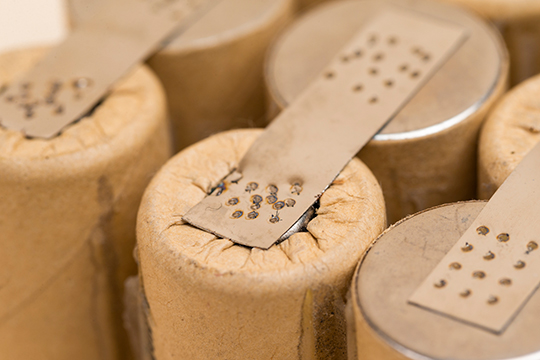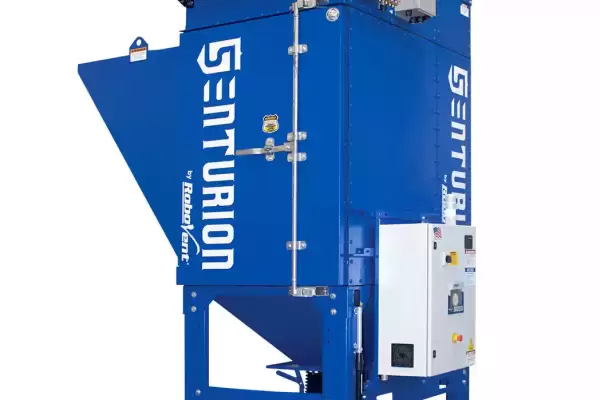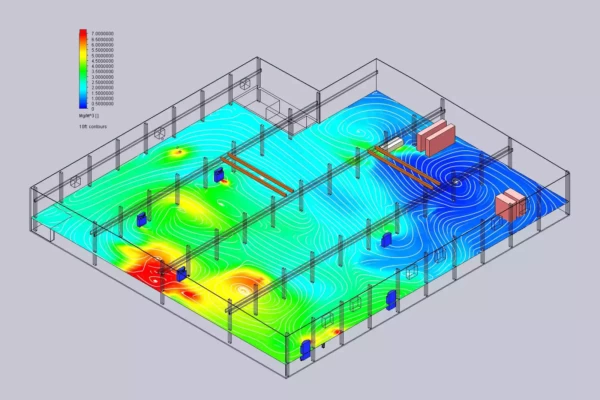DUST TYPES IN NICKEL-CADMIUM BATTERY PRODUCTION
The production of Ni-Cd batteries involves the use of various chemicals and materials that can be hazardous if not handled properly. Nickel-cadmium battery manufacturing generates dust primarily during electrode production and cell assembly. Materials used in Ni-Cd batteries include:
- Cathode materials: The cathode of a nickel-cadmium battery is typically made of nickel oxide hydroxide (NiOOH) mixed with other metal oxides to improve the battery’s performance. The composition of the cathode material can vary depending on the specific application and performance requirements of the battery. In addition to NiOOH, the cathode material in Ni-Cd batteries may contain other metal oxides, such as cobalt oxide (CoO) or iron oxide (Fe2O3), which can enhance the battery’s charge and discharge characteristics. The cathode material may also contain other additives, such as carbon black, which can improve the conductivity of the electrode and enhance the battery’s performance. The cathode material in Ni-Cd batteries is typically prepared by mixing the various components together with a binder material, such as polytetrafluoroethylene (PTFE), to form a paste. The paste is then applied to a metal substrate, such as a nickel-plated steel mesh or foam, which serves as the current collector for the cathode.
- Anode materials: The anode of a Ni-Cd battery is typically made of metallic cadmium (Cd). The anode material in Ni-Cd batteries is typically prepared by casting or sintering cadmium powder into a shape suitable for use in a battery cell. The cadmium is then combined with a separator material, typically made of a porous plastic or paper material, and a potassium hydroxide (KOH) electrolyte to form the anode assembly.
 EXPOSURE RISKS FOR NICKEL-CADMIUM BATTERY DUST
EXPOSURE RISKS FOR NICKEL-CADMIUM BATTERY DUST
Many of the materials used in Ni-Cd battery manufacturing are considered to be hazardous or toxic for humans. Specific risks for materials used in Ni-Cd battery manufacturing include:
- Cadmium: Cadmium is a toxic heavy metal that can pose significant health risks to humans when exposure occurs. Occupational exposure to powdered or fumed cadmium during Ni-Cd battery manufacturing may be associated with a variety of health effects, including respiratory irritation, coughing, shortness of breath and flu-like symptoms. Long-term exposure risks include chronic bronchitis, emphysema, chemical pneumonitis, and other lung diseases; an increased risk of lung, prostate, and kidney cancer; and significant risks of kidney disease and renal failure. Exposure to cadmium can have adverse effects on reproductive health and fetal development; it has been associated with decreased fertility, low birth weight, and developmental delays.
- Nickel: Nickel can have significant health impacts even at low exposures, including chronic bronchitis, reduced lung function, and lung cancer. Nickel allergies are also very common, especially with repeated occupational exposure. Nickel dust exposure may be associated with adverse effects on reproductive health, including reduced fertility and an increased risk of miscarriage. As nickel oxide hydroxide (NiOOH), exposure risks may include contact dermatitis (“nickel itch”); intestinal disorders; irritation to the eyes (including conjunctivitis) and upper respiratory tract; lung disease including occupational asthma and pulmonary fibrosis; and an increased risk of lung or nasal cancer.
- Polytetrafluoroethylene (PTFE): Inhalation of polytetrafluoroethylene used as a binder in cathode production may cause acute lung injury or pneumonitis.
- Cobalt: Cobalt can cause irritation of the respiratory tract, coughing, and difficulty breathing when inhaled. Chronic cobalt exposure can lead to asthma, chronic bronchitis, pulmonary fibrosis, and other lung diseases, including lung cancer. It may also cause liver damage with high levels of exposure.
- Carbon black: Carbon black exposure causes irritation to the nose, throat, eyes and lungs. High levels of exposure, particularly to very small (PM 2.5) particles of carbon, may cause lung disease (including asthma, COPD, and fibrosis) and may have harmful effects on the cardiovascular system. Carbon black is also considered to be a possible human carcinogen.
COMBUSTION RISKS IN NICKEL-CADMIUM BATTERY MANUFACTURING
Some materials used in Ni-Cd battery manufacturing create a significant risk of a combustible dust explosion. Combustible dust explosions occur when an explosible material forms an airborne cloud of dust under containment in the presence of oxygen and an ignition source.
- Both nickel and cobalt are both considered highly explosible under the right circumstances. Cadmium dust is also considered to be highly combustible and pyrophoric, creating a strong explosion or flash fire risk when airborne dust comes in contact with a flame or spark. Burning metals, including metals used in Ni-Cd battery production, may react violently with water and other extinguishing agents and may release corrosive and toxic fumes when burned.
- Carbon black and other forms of carbon sometimes used in batter production are also highly combustible and can pose a fire hazard if not handled appropriately. Carbon black can combust rapidly when exposed to an ignition source.
The National Fire Prevention Association (NFPA) Standard 652: Standard on the Fundamentals of Combustible Dust requires employers working with potentially combustible materials to conduct a Dust Hazard Analysis (DHA). A DHA will give manufacturers a better understanding of the explosibility of their material and specific hazards related to Ni-Cd battery manufacturing processes.
Learn more about mitigating combustion risks for battery dusts in the Visual Guide to Combustible Dust Collection.
 REGULATIONS FOR NICKEL-CADMIUM BATTERY MANUFACTURING
REGULATIONS FOR NICKEL-CADMIUM BATTERY MANUFACTURING
In the U.S., employers must comply with Permissible Exposure Limits (PELs) for respirable materials set by the Occupational Health and Safety Administration (OSHA). These exposure limits have the force of law, and employers are required to ensure that employees are not exposed to materials at levels above the PEL. Manufacturers can find the PEL specific to the materials they are working with in OSHA’s Annotated PEL Tables. Employers should also be aware of Recommended Exposure Limits (RELs) from the National Institute of Occupational Safety and Health (NIOSH) and Threshold Value Limits (TLVs) from the American Conference of Governmental Industrial Hygienists (ACGIH). These recommended limits do not have the force of law, and they are frequently lower than the OSHA-required PEL. Ni-Cd battery manufacturers may wish to aim for the lower recommended exposure limits to keep employees safe and prepare for future regulatory changes. Here are OSHA PELs for some materials found in Ni-Cd battery production:
- Cobalt metal dust and fume: 0.1 mg/m³
- Nickel: 1 mg/m³
- Cadmium metal dust and fume: 5 µg/m³ (2.5 µg/m³ Action Level)
- Carbon black: 3.5 mg/m³
Manufacturers working with potentially combustible Ni-Cd battery dust must also comply with all regulations related to combustible dust. Combustible dusts are regulated under OSHA’s General Duty Clause (Section 5(a)(1)) with additional requirements under the Hazardous Locations (§1910.307), Hazard Communication (§1910.1200) and Housekeeping (§1910.22) standards. OSHA’s Combustible Dust National Emphasis Program (NEP) outlines policies and procedures for inspecting workplaces that create or handle combustible dusts. In addition, manufacturers dealing with combustible dusts must follow NFPA standards for handling combustible materials, including NFPA 652, NFPA 654, NFPA 484, NFPA 68, and NFPA 69.
Hazardous materials used in Ni-Cd battery production may also be subject to Environmental Protection Agency (EPA) rules for emission control and material storage and disposal under the Clean Air Act, Clean Water Act, and Resource Conservation and Recovery Act (RCRA). Ni-Cd battery manufacturers may have to report emission levels for hazardous materials such as cobalt and cadmium.
MORE DUST TYPES
SOLUTIONS FOR NICKEL-CADMIUM DUST COLLECTION
Need dust control solutions for Ni-Cd battery manufacturing? RoboVent can help you develop a dust control strategy to control hazardous dusts, prevent worker exposure, reduce combustion risks and ensure regulatory compliance.
Engineering controls such as dust collection and air filtration must be used as a primary control measure when working with hazardous materials used in Ni-Cd battery manufacturing. RoboVent Senturion is a powerful, flexible dust collector that can be adapted to a wide range of applications, including the collection of dust produced in battery manufacturing. RoboVent engineers can develop a customized solution for Ni-Cd dust control, including:
- Hood, ductwork and system design to maximize capture rates and minimize disturbance of usable materials or sensitive manufacturing atmospheres
- Ventmapping Engineering services
- Filter selection, including HEPA filtration for ultrafine particulate and nanomaterials
- Indoor air quality and exposure testing
- Regulatory compliance
Nickel-Cadmium Battery Dust Collection Collectors
Clean Air Technology Services
CONTACT US
Contact one of our industrial dust experts to gain the advantage against dust-generating processes and applications.








